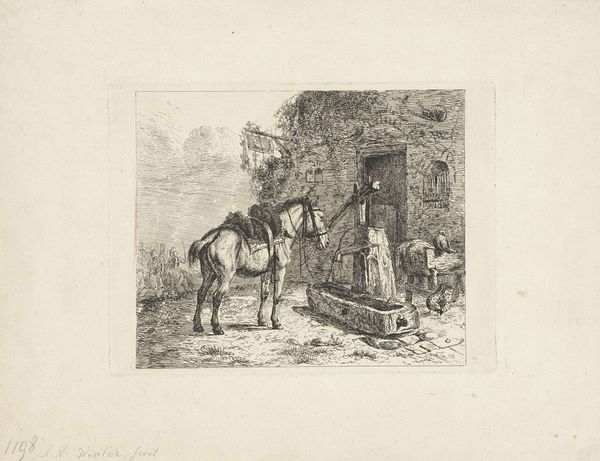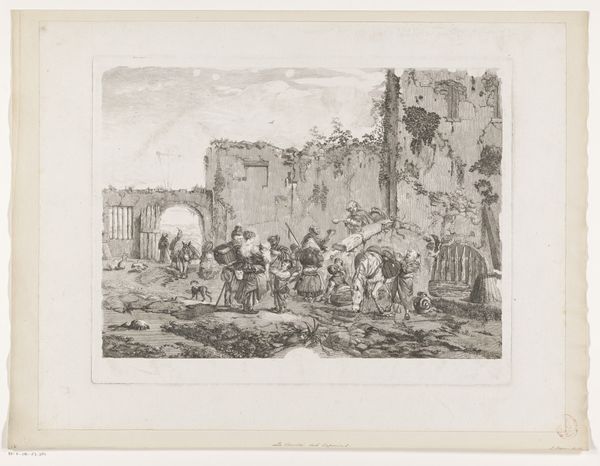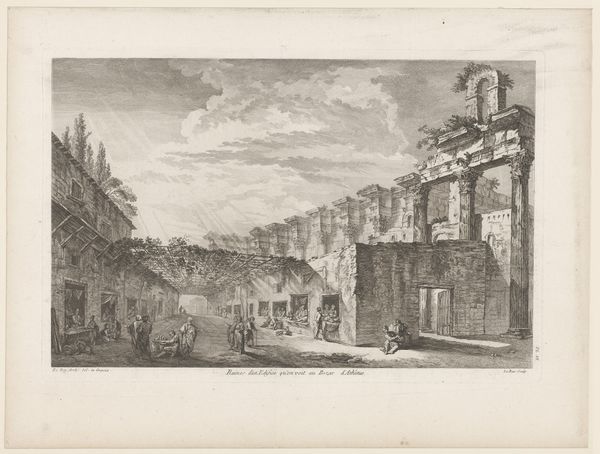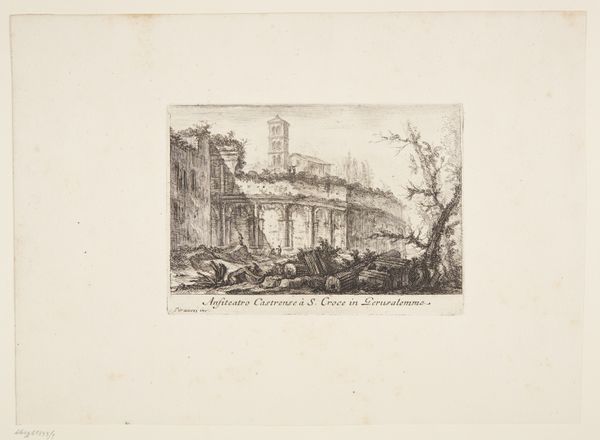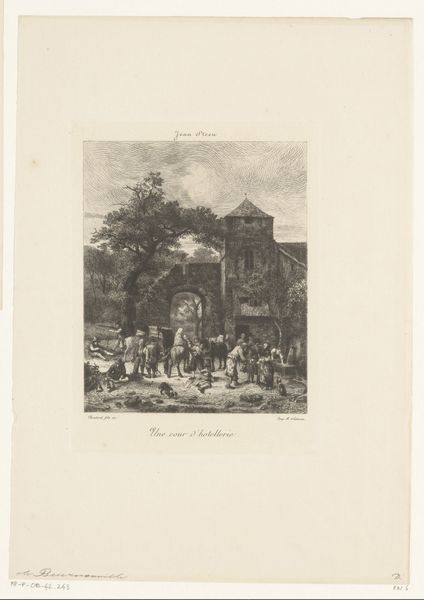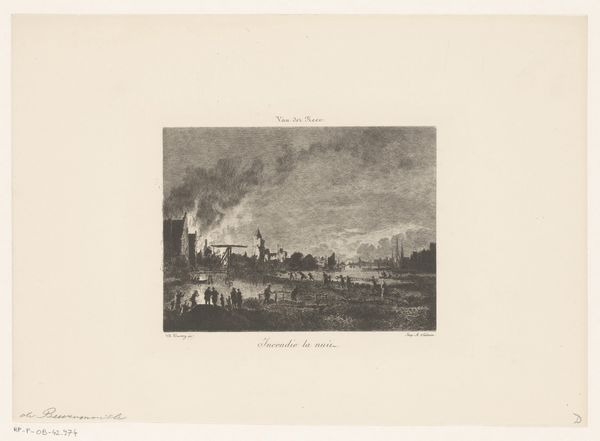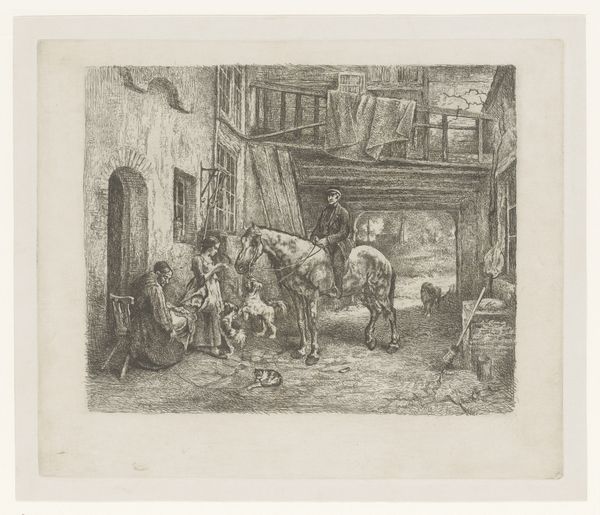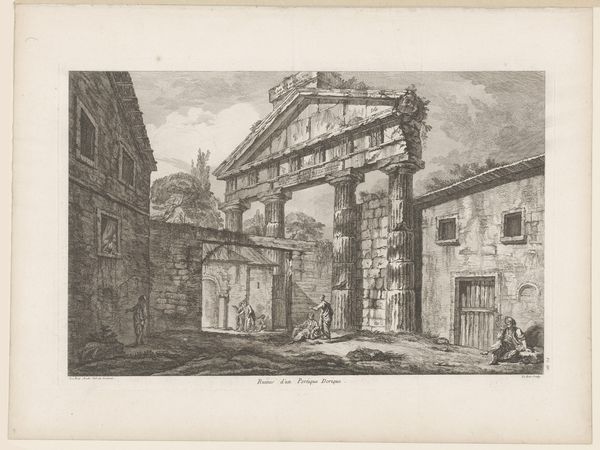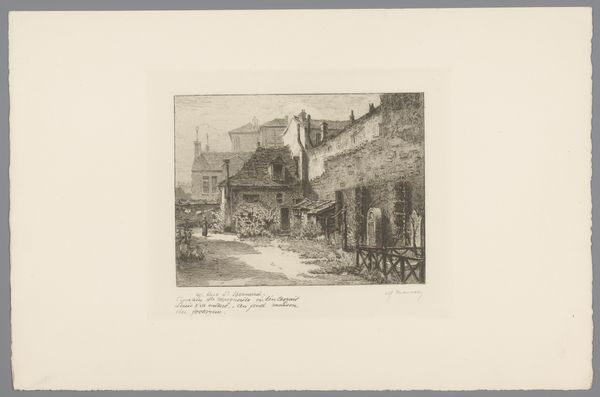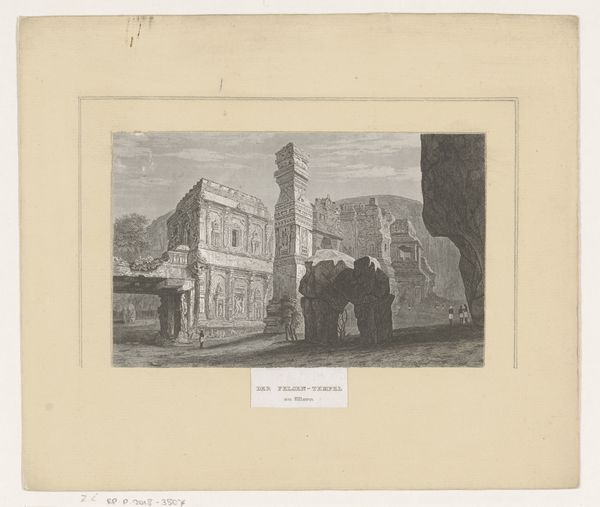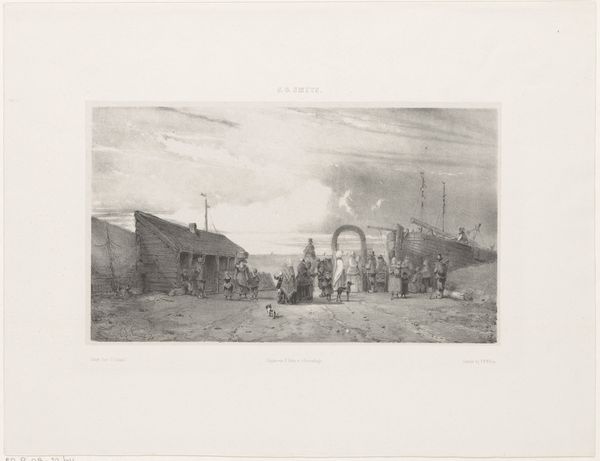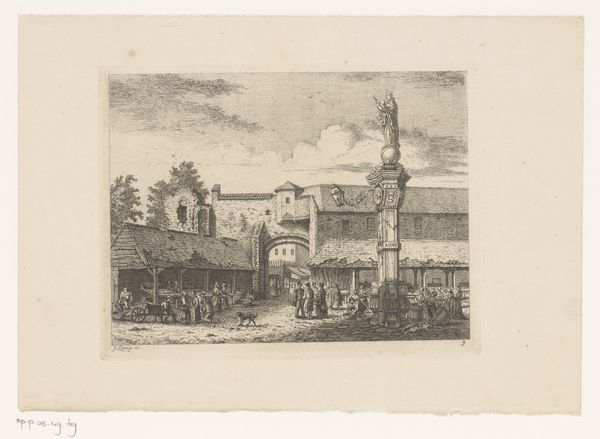
Dimensions: height 275 mm, width 382 mm
Copyright: Rijks Museum: Open Domain
Editor: This engraving, "Three Donkeys Before an Inn," likely dating from the 19th century and attributed to an anonymous artist after Duzardin, has a remarkably calm feel, despite the activity it depicts. I'm struck by how the artist captures the everyday life. What draws your attention in this piece? Curator: I am interested in how genre scenes like this normalize a certain social order. The figures outside the inn, the burden-bearing donkeys... Who benefits from this labor, and who is rendered invisible? Consider how the ‘everyday’ often obscures unequal power dynamics. Is there an unquestioning acceptance of these roles depicted? Editor: That’s a fascinating perspective. I hadn’t thought about the implications of representing this specific scene. Curator: And the "inn" itself - who is welcomed, who is turned away? Consider the politics of space and accessibility. This engraving prompts us to investigate the relationships between those who travel, those who serve, and the spaces that connect and divide them. Who controls the means of transportation, and who is burdened by it? Editor: That makes me wonder about the contemporary viewer's role in all of this. It sounds like we're also implicated. Curator: Precisely. As we gaze upon this seemingly innocuous scene, we're also asked to confront our own position within systems of power and representation. Does the artwork normalize existing structures, or offer possibilities for thinking outside of them? What do you think? Editor: I now see how the "Three Donkeys Before an Inn" does far more than depicting everyday life, revealing how class, labor, and access intersect. It’s certainly made me reconsider genre art! Curator: And that's the power of engaging with art critically. We start seeing not just what is there, but what is implied and what is omitted.
Comments
No comments
Be the first to comment and join the conversation on the ultimate creative platform.
